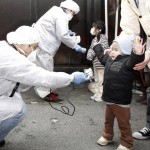It’s been reported that the Fukushima tsunami plan was an out of date single page memo.
A good Crisis Plan is a cleverly and thoughtfully crafted document, long enough to cover all situations and containing sufficient information and yet short enough to be quickly read in a crisis.
Last Friday we at the Wilkinson Group conducted a crisis desktop exercise for a major Australian organisation. It took 90 minutes, shorter than most, and with all relevant employees gathered around a table in a mock ‘war room’, working through a ‘desktop’ crisis. We were testing the Plan and our preparedness for the crisis incident; for the management team it was a refresher course and a reminder that crisis management and recovery is a critical part of their work.
When a crisis arrives, these people are ready.
Crisis planning requires carefull preparation and rehearsal of all scenarios; it is the first of seven factors that contribute to successfully managing a crisis:
1. Strong leadership – focused, disciplined, good governance, a strong plan
2. Strong spokespeople – well trained, articulate
3. Strong messaging – simple and clear
4. Nimbleness
5. Simplicity – get the basics right; do them well and most of the rest falls in behind
6. An adequate budget (resourcing)
7. A realistic timeline
Depending which study you read, 70-90% of crises might be averted if management was prepared ahead of time with a well thought through and rehearsed Crisis Plan. The ugly truth will slowly emerge from Fukushima, as inquiries unearth the minutae of why the facility was so under-prepared.





